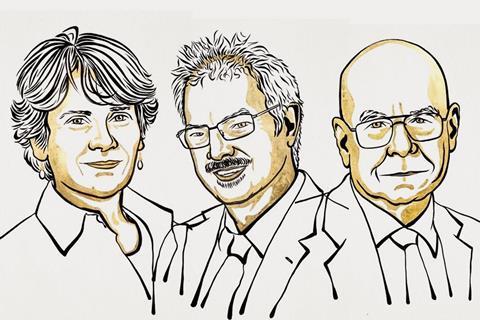
This year’s chemistry Nobel prize is shared equally between the click chemistry pioneers Barry Sharpless and Morten Meldal, and Carolyn Bertozzi, who shaped the field of bioorthogonal chemistry. For Sharpless, this is his second chemistry Nobel prize – he’s only the second person after Frederick Sanger to receive two chemistry prizes.
‘I’m absolutely stunned, I’m sitting here and can hardly breathe,’ said Bertozzi in a call with the Nobel committee shortly after the announcement. ‘I’m still not entirely positive that it’s real.’
Click reactions have revolutionised chemistry as a robust and reliable way to join small modular units together. Most importantly, they can be made to be biocompatible. Such bioorthogonal reactions allow scientists to track biological processes inside living organisms without disturbing their natural functions. Biocompatible click reactions can also be used to deliver drugs – the first human trial of an anticancer drug that selectively releases the active ingredient at the tumour site is currently underway.
‘This is a wonderful prize which recognises the importance and impact that the click reaction has had in a relatively short period of time,’ said David O’Hagan from the University of St Andrews, UK, in a statement.
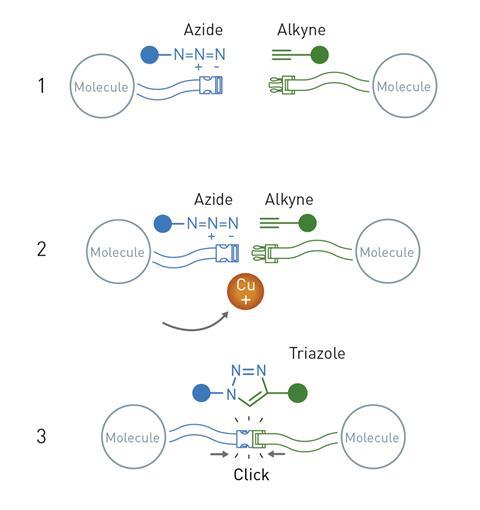
Sharpless, from Scripps Research, US, was the first to suggest click chemistry as a concept, around the time he received his first Nobel prize in 2001. He believed chemists spent too much time and effort imitating natural molecules and envisaged a class of reaction that was wide in scope, high yielding and didn’t generate offensive byproducts. Within a few years, Sharpless and Meldal, from the University of Copenhagen, Denmark, independently developed the reaction that would become synonymous with the click reaction: a copper-catalysed 1,3-dipolar cycloaddition between alkynes and azides to give triazoles.
Bertozzi, from Stanford University, US, created a biocompatible, copper-free version of the alkyne–azide cycloaddition. ‘It was exciting to us, as molecular thinkers and chemists at the time,’ says Jennifer Prescher from the University of California, Irvine, US, who was a co-author on one of Bertozzi’s earliest studies describing the reaction. ‘But did we think that this is going to blow up in the field? No, not at the time.’ Bertozzi went on to use the reaction to map glycans, the complex carbohydrates that sit on protein and cell surfaces, and are involved in processes such as immune recognition. ‘The images of glycosylation in a developing zebrafish embryo are stunning – I don’t think anyone had appreciated some of the patterns and localisations,’ says Prescher.
‘Biorthogonal ligation chemistry provides powerful molecule- and site-specific approaches to dissect chemistry in vivo,’ explains Robert Field, a professor of chemistry at the University of Manchester, UK. ‘The ability to gain spatial and temporal information about which molecules are where, when and attached to what is proving transformative. The impact of early discoveries is evidenced by the plethora of new reagents, reactions and biological applications that Bertozzi’s inspirational work in glycoscience have fostered. And only the tip of the iceberg has been sampled. A new age of chemical interrogation of complex biological systems awaits, with potential for application right across biology and medicine.’
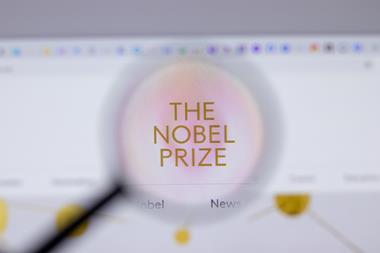



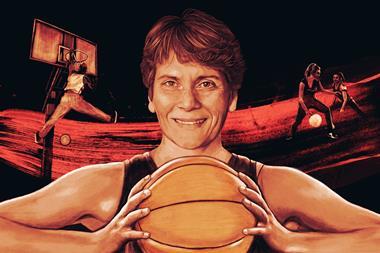
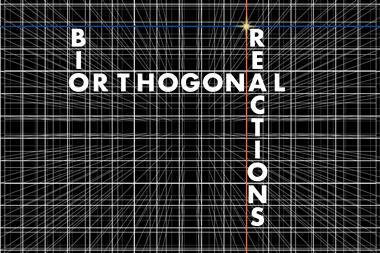






No comments yet